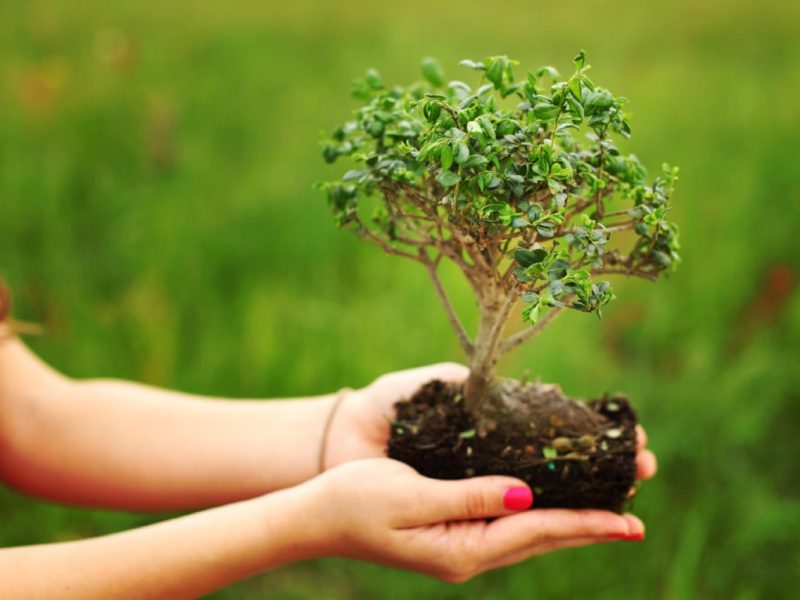Bonsai is a type of tree that is deliberately kept small by regular pruning and training. The art of bonsai originated in China and was brought to Japan in the 6th century. Bonsai is popular all over the world and can be found in botanical gardens and homes.
There are three things to consider when growing a bonsai: the right plant, the right pot, and the right soil. The plant you choose should be small and have a compact root system. The pot should be wide and shallow with a drainage hole. The soil should be a light, sandy loam.
To grow a bonsai, you will need to water it regularly and fertilize it twice a month. The plant should also be repotted every two to three years. To repot a bonsai, remove it from the pot and loosen the soil. Replace the soil with fresh soil and repot the tree in a wider pot.
To prune a bonsai, you will need sharp scissors or clippers. The main goal of pruning is to shape the tree and keep it small. Prune the tree in the spring and summer when it is growing actively. Cut off any dead or diseased branches and pinch off the tips of young branches to shape the tree.

How big do bonsai trees get
Bonsai trees are miniature trees that are often grown in containers. They can be any size, but most are small. Some bonsai trees get very large, but most are less than three feet tall.
The size of a bonsai tree depends on the variety of tree and the size of the container. Some tree varieties grow very large, while others stay small. The size of the container also affects the size of the tree. A large container can hold a large tree, while a small container can only hold a small tree.
Most bonsai trees are kept small by pruning and training the tree to grow in a specific shape. The roots are also pruned to keep the tree small. This limits the amount of nutrients and water the tree can get, which keeps the tree small.
Bonsai trees can be any color, but most are green. The leaves can also be any color, but most are green or dark green.
Bonsai trees are a popular hobby for people of all ages. They are a great way to learn about trees and gardening. Bonsai trees can be grown indoors or outdoors, depending on the variety.
Bonsai trees are a beautiful addition to any home or garden.
How to grow a bigger bonsai tree
Bonsai trees are miniature trees that are grown in small pots. They can be either indoor or outdoor plants, and can be made from a variety of different tree species. While bonsai trees can be grown from seed, it is often easier to start with a pre-bonsai tree that is already in a small pot.
The first step in growing a bigger bonsai tree is to choose the right pot. The pot should be at least twice the size of the tree’s current pot. It is important to use a pot with a drainage hole at the bottom, as bonsai trees need to be watered frequently.
Once you have a suitable pot, the next step is to transplant the bonsai tree into it. Be sure to remove the tree from its current pot carefully, making sure to keep as much of the original soil as possible. Place the tree in the new pot and fill in around it with fresh soil. Tamp the soil down gently to help it settle.
Now it is time to water the bonsai tree. Be sure to wet the entire soil surface, and then allow the pot to drain thoroughly. You will need to water the tree frequently, especially during the summer months.
In order to help the bonsai tree grow bigger, it is important to provide it with the right nutrients. You can do this by adding a bonsai fertilizer to the water every few weeks.
Finally, be sure to prune the tree regularly. This will help keep it in shape and encourage new growth.
Can you grow bonsai from seeds?
The answer is yes, you can grow bonsai from seeds, but the process can be challenging. Bonsai trees grown from seeds typically take longer to mature than those that are purchased or propagated from cuttings.
Seeds for bonsai can be obtained from a variety of sources, including nurseries, garden centers, and online vendors. When selecting seeds, it is important to choose a variety that is appropriate for your climate. Some plants, such as junipers, are hardy and can be grown in colder climates, while others, such as tropical species, are better suited for warmer climates.
Once you have selected a variety of seeds, the next step is to germinate them. This can be done in a number of ways, including planting them in soil, watering them in a glass of water, or using a seed starting kit.
The key to success when growing bonsai from seeds is to provide the young plants with the proper care and attention. This includes watering them regularly, keeping them in a sunny location, and fertilizing them as needed. It also helps to prune the branches and leaves regularly in order to shape the tree and promote healthy growth.
Growing bonsai from seeds can be a rewarding experience, but it takes time and patience. With a little bit of effort, however, you can create a beautiful bonsai tree from scratch.



